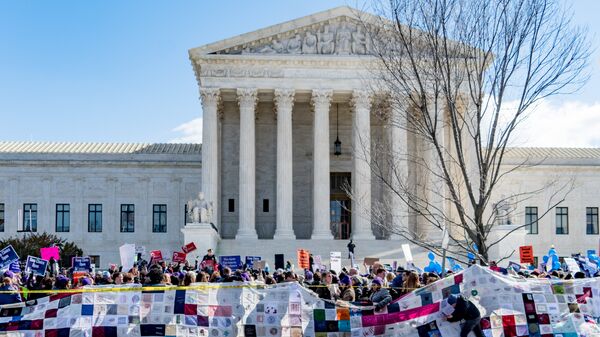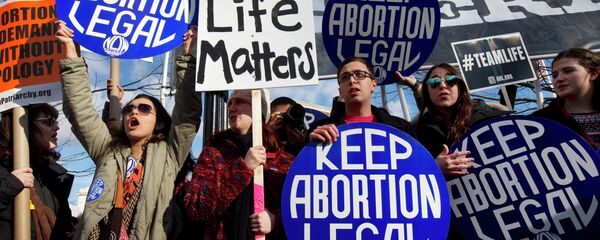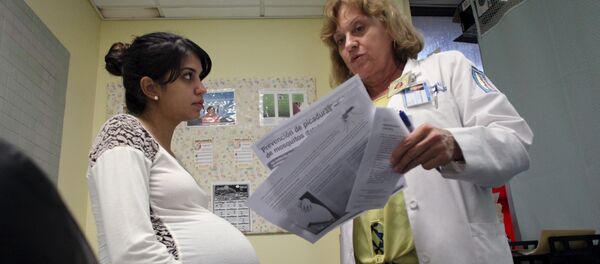BACKGROUND
On Wednesday, the US Supreme Court heard oral arguments for the Hellerstedt case, billed by legal pundits as the most important legal challenge to abortion rights in two decades. Thousands stormed the Supreme Court steps both for and against a Texas law, at issue in the case, that restricts access to abortion clinics.
In the coming months, the Supreme Court will determine whether the Fifth Circuit Court of Appeals erred in refusing to consider the extent to which laws that restrict abortion by claiming to protect public health do, in fact, protect public health.
The Court will also decide whether the Fifth Circuit erred in its interpretation of a Supreme Court precedent in holding that Texas could enforce laws that significantly reduce abortion clinic availability.
The ghost of Antonin Scalia, the late-Justice and ardent anti-abortionist, hovers above this important case that could be decided by the eight remaining Justices. Court watchers believe a decision will come down to Justice Anthony Kennedy, with the Court either overturning the Fifth Circuit’s decision by striking the Texas law down as unconstitutional, or a 4-4 split wherein the Texas law would be upheld by the lower court’s decision.
On the basis of Wednesday’s oral arguments, a vast majority of the legal punditry expects that the Court will not make a decision, instead sending the case back down to the lower courts. The Justices on Wednesday, debated whether the case record properly establishes whether the recent flurry of abortion clinic closures was caused by the new law.
Women were first legally granted the right to abortion in 1973 in a 5-4 decision, Roe v. Wade, in which the Supreme Court held that abortion was a fundamental right.
INTERVIEW
What the Texas Law at the Heart of the Supreme Court Case Does
In 2013, Texas passed a law that puts substantial restrictions on women’s health facilities and, specifically, abortion clinics. The law called for two primary restrictions, explained Verheyden-Hilliard, "The first is that doctors working at abortion clinics must have admitting privileges at hospitals and the second is that the clinics themselves must be surgery capable facilities."
These mandates, Verheyden-Hilliard explained, forced the closure of a majority of women’s health clinics in Texas. "The restrictions are so extreme that they are forcing the majority of clinics to close such that out of the forty clinics, there will only be about nine remaining clinics statewide to serve 75,000 Texas women per year who seek abortions." Verheyden-Hilliard noted that, "no credible medical organizations in the United States think that either of these restrictions is necessary."
The majority of abortion clinics, both in Texas and nationwide, are not surgery-capable facilities, given the low risk associated with modern abortion procedure, the ability to rapidly transport a patient to the hospital if necessary, and the higher costs that would make these services inaccessible to too many women.
What Have Been the Impacts on Women in Texas?
"The law is making it all but impossible to get care in Texas," explained pro-choice activist Karina Garcia. "It is forcing women to travel hundreds of miles, it forces them to find childcare, to take a day off work, and women who don’t have immigration status it means they can’t access these services at all because they can’t cross areas where there are checkpoints."
The law has a disproportionate impact on lower-income women, especially those of color, explained Garcia, as "they don’t have access to transportation, they can’t access many facilities as it is, and the few clinics that do exist, they are just making it harder and harder for them to access."
How do Women in Texas Feel about the Law?
"The women are pissed," Garcia stated, adding that "women are standing up and they are not turning back, they want to be heard, and they want the Supreme Court to stand on the side of women, to stand on the side of justice with our families." Garcia pointed out that, in light of how poorly women were treated prior to the 1973 Roe v. Wade ruling, regardless of the Court’s decision, "we’re not going back and there is no person, there is nothing that is going to take us back."
What is the Strategy of Anti-Abortion Political Forces to Strip Away Abortion Rights?
Verheyden-Hilliard doesn’t believe that the "pro-life" community, aims to overturn Roe v. Wade, but rather that they aim to "scrape away the right," incrementally. She explains that in the Roe and subsequent decisions, the Court provided a caveat to a woman’s right to an abortion in holding that the state has a legitimate interest in regulating abortion on the basis of public health and human "potentiality."
Since those decisions, she says, anti-abortion forces have aimed "to put so many holes in the right across the United States that while the right can exist on paper, the right simply doesn’t exist in fact." She notes that anti-abortion groups have "been very successful in this strategy."
Garcia agreed, noting that, "in the poorest areas, where women’s health and reproductive services are needed the most, that is where abortion opponents are making the most progress." She argues that, "they should be guaranteeing these fundamental human rights, but instead they are just chipping away at it." Unfortunately, she says, "Politicians think they can do whatever they want with our bodies."
It All Comes Down to One Vote – Justice Anthony Kennedy
"Who wrote these laws?" asked Verheyden-Hilliard, and, answering her own question, stated, "Men." She observed that, "Here you have state legislatures that are mostly men and right wing opponents of women’s rights making a decision that women are not allowed to access abortion." And now, she says, "We go all the way up to the Supreme Court and, because of the political breakout of the bench, everyone is turning to one justice, to one man, to make a decision that will affect millions of women’s lives."
"One man, Justice Anthony Kennedy, will decide for millions of women what the rest of their lives will be like, what will their families’ lives be like, what hope and opportunity they will have, and how much will they suffer based on one person’s decision," Verheyden-Hilliard said, adding, "you have to wonder about the fundamental nature of democracy and of women’s ability to control their own destinies."






